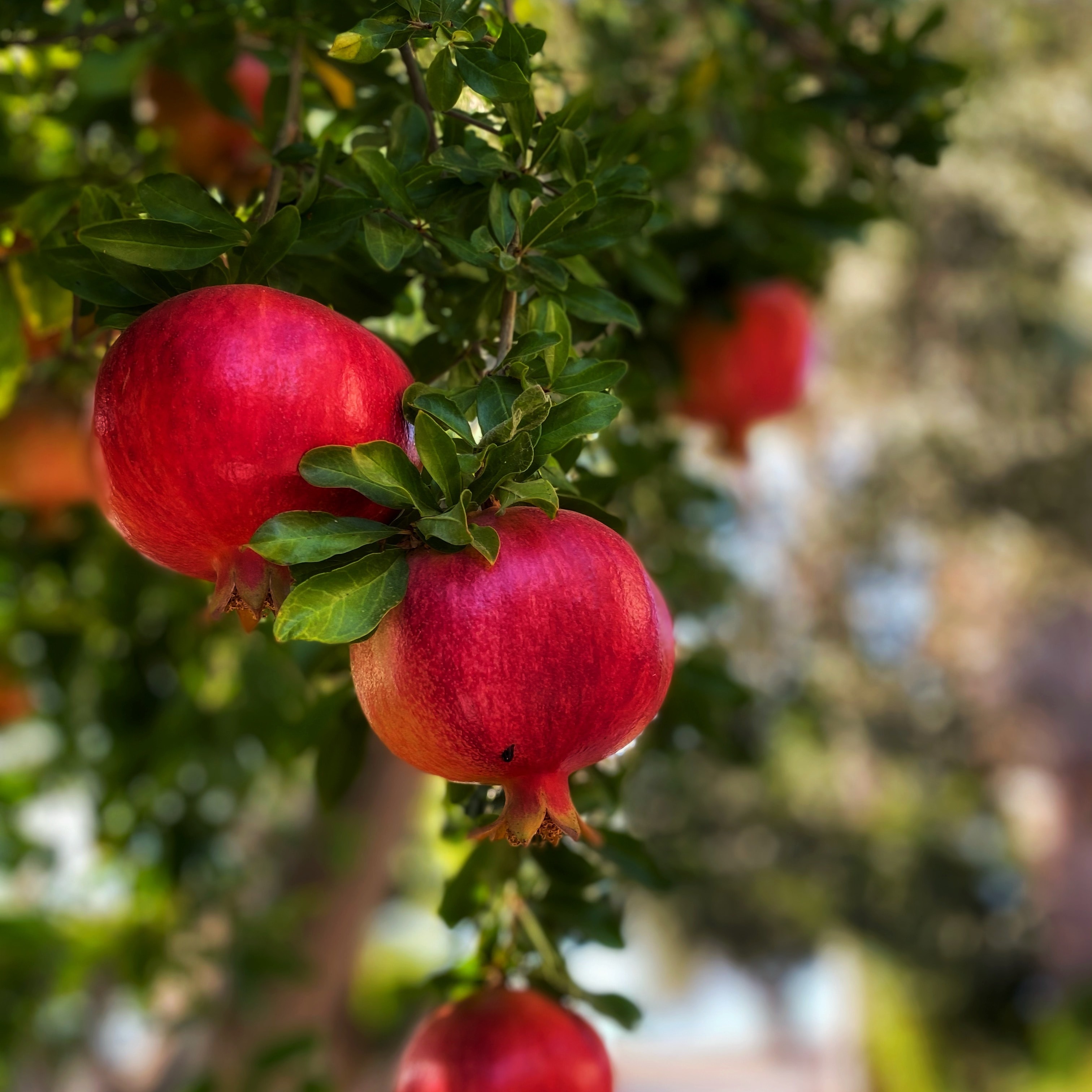
Introduction
Pomegranates are beautiful and exotic fruits known for their vibrant color and sweet-tart flavor. While traditionally associated with warmer climates, it is possible to grow pomegranates in the United Kingdom under the right conditions. In this comprehensive guide, we will take you through the process of growing pomegranates, from selecting the right varieties to caring for your trees and harvesting their delicious fruits. Let's dive in!
Choosing the Right Variety
When it comes to pomegranates, there are a few varieties that are better suited to the UK climate. Here are some popular choices:
- 'Wonderful': A widely grown variety with large, deep red fruits and sweet, juicy arils (the edible seeds inside the fruit).
- 'Provence': Known for its cold tolerance and flavorful fruits, this variety produces medium-sized pomegranates.
- 'Chico': A dwarf variety that is well-suited to container gardening, producing smaller fruits with a sweet and tangy taste.
- 'Salavatski': A cold-hardy variety that originated in Russia, with medium-sized fruits and a rich, sweet flavor.
Sowing and Planting
Pomegranates are typically propagated from cuttings or grafted onto rootstocks. Follow these steps to plant your pomegranate tree:
- Select a suitable location: Choose a spot in your garden that receives full sun and has well-drained soil.
- Prepare the soil: Pomegranates prefer slightly acidic to neutral soil. Amend the soil if necessary and ensure good drainage.
- Dig the planting hole: Make a hole slightly larger and deeper than the root ball of the pomegranate tree.
- Planting depth and spacing: Position the tree so that the top of the root ball is level with or slightly above the soil surface. Space pomegranate trees 10-15 feet apart to allow for adequate growth.
- Backfill the hole with soil, gently firming it around the roots. Water thoroughly.
Growing
To ensure healthy growth and optimal fruit production, consider the following tips:
- Sunlight: Pomegranates thrive in full sun, so ensure they receive at least 6-8 hours of direct sunlight each day.
- Watering: While pomegranates are drought-tolerant, regular watering is essential during dry periods, especially during the growing season.
- Soil conditions: Pomegranates prefer well-drained soil with a pH between 5.5 and 7.5. Avoid waterlogged or compacted soil.
- Fertilizing: Apply a balanced fertilizer formulated for fruit trees in early spring and again in early summer. Follow the recommended application rates.
- Pruning: Prune pomegranate trees during the dormant season (late winter to early spring) to remove dead or diseased branches and maintain an open center structure.
- Pest control: Monitor your pomegranate tree for common pests such as aphids or fruit flies. Use organic or chemical controls as necessary.
Harvesting
Pomegranates are typically ready to harvest in late summer or early autumn. Here's how to know when they are ripe:
- Color change: Look for a deep, rich color. The skin of ripe pomegranates should be a vibrant shade of red or yellow, depending on the variety.
- Sound test: Tap the fruit lightly with your knuckles. Ripe pomegranates will produce a metallic, ringing sound.
- Firmness: Gently squeeze the fruit. It should feel firm, but not too hard or too soft.
- Harvesting technique: Cut the pomegranates from the tree using pruning shears or scissors, leaving a short stem attached.
Plant Care
Proper care is essential for the health and productivity of pomegranate trees. Consider the following practices:
- Winter protection: In colder regions, protect young pomegranate trees from frost and freezing temperatures by wrapping the trunk with burlap or using tree wraps.
- Thinning fruit: If your pomegranate tree produces an excessive number of fruits, thin them out when they are small to ensure better fruit size and quality.
- Pruning: Prune pomegranate trees during the dormant season to remove dead or crossing branches and maintain an open center structure.
Storing and Using
Once you've harvested your pomegranates, here are some tips for storage and usage:
- Fresh use: Pomegranates can be stored at room temperature for up to a week. Keep them in a cool, dry place away from direct sunlight.
- Seeds (arils): Extract the juicy seeds (arils) from the pomegranate by cutting the fruit and gently loosening the arils. Use them in salads, desserts, or as a garnish.
- Juicing: Pomegranate juice is delicious and packed with antioxidants. Extract the juice by pressing the arils or using a juicer.
- Pomegranate molasses: Boil down the juice to create a thick, tangy syrup known as pomegranate molasses. It can be used in dressings, marinades, or as a flavoring agent.
Common Problems
While growing pomegranates, you may encounter some common issues:
- Fruit splitting: Rapid changes in watering or temperature can cause pomegranate fruits to split. Maintain consistent watering and avoid drastic temperature fluctuations.
- Pest infestations: Pomegranates may be susceptible to pests such as aphids, whiteflies, or mealybugs. Monitor for signs of infestation and use appropriate controls if necessary.
- Root rot: Overwatering or poorly drained soil can lead to root rot. Ensure proper drainage and avoid excessive watering.
Conclusion
Growing pomegranates in the United Kingdom can be a rewarding and exciting endeavor. By selecting the right varieties, providing proper care, and addressing common challenges, you can cultivate healthy pomegranate trees that bear delicious and nutritious fruits. Remember to be patient, as it may take a few years for your pomegranate tree to reach full productivity. Enjoy the beauty and bounty of your homegrown pomegranates!